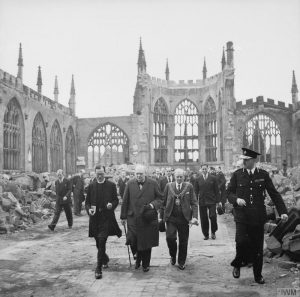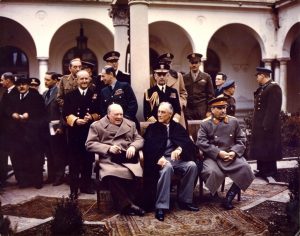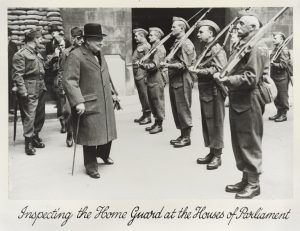
Finest Hour 193
“The Little Five-Foot Nation” – Churchill and Wales
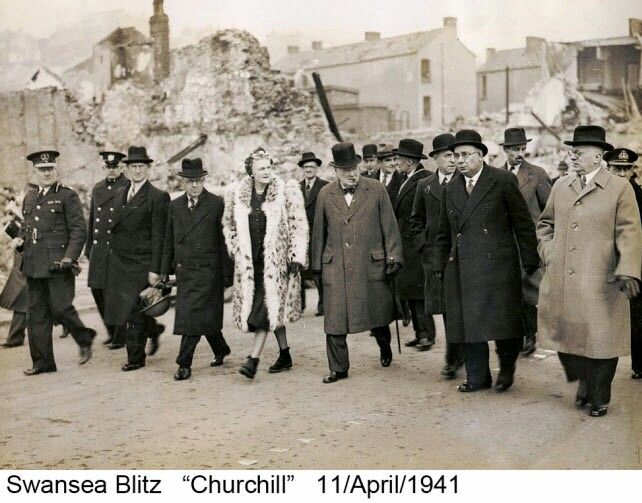
Mr. and Mrs. Churchill inspect bomb damage in Swansea, 11 April 1941
August 30, 2022
Finest Hour 193, Third Quarter 2021
Page 08
By Kenneth O. Morgan
Professor Lord Morgan is Honorary Fellow of The Queen’s and Oriel Colleges, Oxford, a Fellow of the British Academy, a Labour peer, and author of thirty-five academic books.
It may seem paradoxical, even perverse, to devote an issue of Finest Hour to Winston Churchill’s activities and reputation in Wales. Lauded over the generations as the dominant British hero, leaving Shakespeare and Newton trailing in his wake, in Wales Churchill was uniquely unpopular. This was for a highly specific reason. The use of armed troops during the violent 1910 coal strike at Tonypandy in the Rhondda Valley, followed shortly afterwards by two railwaymen being shot down in another fierce clash at Llanelli in 1911, pursued him for the remainder of his career. Decades later, as Labour prime minister in November 1978 during further troubles in the coal industry, James Callaghan, heckled in the Commons by Winston Churchill’s namesake grandson, observed with somewhat unusual (and perhaps contrived) bitterness that he should not pursue the family vendetta against the Welsh miners.
As shown in the article that follows by Dai Smith, the leading historical authority on these matters, Tonypandy was an unusually violent episode in British labour history. Unrest was widespread in the valleys. There were centres of socialism throughout the coalfield, notably in Merthyr Tydfil, where the leader of the Independent Labour Party, Keir Hardie, was the MP. There were widely read Labour newspapers, notably Llais Llafur (Voice of Labour) published in Ystalyfera, a small mining community in the far north of the Swansea Valley, and the Merthyr Pioneer. After that, the old alliance between Liberal and Labour politicians rapidly deteriorated. More important, the trade unions became politicized and pushed the policies of the new Labour Party further to the left. In 1908 the South Wales Miners’ Federation (SWMF), with almost a quarter of a million members, became affiliated to the Labour Party. More alarming still, there were undercurrents among the rank-and-file miners of revolt against their own leaders, including their president, William Abraham, known by his bardic name of “Mabon.”1
There were specific issues at Tonypandy: the quasi-syndicalist Unofficial Reform Committee (meeting in an Italian café) took up the cause of workers’ control rather than centralised state-owned nationalisation, a version of industrial devolution. Key aspects of industrial discontent soon led to bitter protests. This created tension around new wage demands such as that for additional pay surrounding work in so-called “abnormal places,” where it was claimed that the price list did not allow a permanent living wage. This led to violence in which one miner, Samuel Rays of Tonypandy, died of a fractured skull. The temperature was raised still further when Churchill—the Home Secretary—sent in battalions of troops from the Lancashire and the Royal Munster Fusiliers to the mining valleys with fixed bayonets. Detachments of cavalry from the 18th Hussars patrolled the streets around Pontypridd for several weeks. As noted, the bitter legacy lasted for years, and Churchill suffered decades of abuse and accusation as a result.

2024 International Churchill Conference
Churchill’s personal responsibility for the troubles at Tonypandy has long provoked controversy. Professor Smith, starting on page 15, makes an original and important contribution to the debate. In some quarters, the condemnation by the critics has been exaggerated. Churchill had by no means been considered an anti-labour extremist at this time. For instance he supported the miners’ eight-hour working day. He was considered, along with Lloyd George, to be one of the radical New Liberals of the day. On Tonypandy, he was at first attacked by the coalmine owners for undue caution rather than aggressive extremism. He held back troops at Swindon en route for South Wales as a precautionary move. Nevertheless, it is clear that those who have defended him in belligerent fashion have been too one-sided.2
Churchill was the Home Secretary, yet he assumed authority over the armed forces, which was the departmental responsibility of Richard Haldane, the Secretary of State for War. Churchill was far more belligerent towards the miners than others of the authorities concerned, including the local magistrate Daniel Lleufer Thomas, a moderate, nationalistic Liberal. Certainly the commanding officer of the troops in the locality, General Neville Macready, proved a force for restraint in South Wales, unlike his conduct after the Great War during the “troubles,” the conflict with the Irish Republican Army.3 Churchill could be criticised, admittedly in a crisis of social order, for politicising the police by placing them under the same command as the troops, and also making scant effort to moderate the aggressive behaviour of the police, especially the dreaded “Glamorgans,” in preserving order.4 The latter were under the command of the Chief Constable of Glamorgan, Colonel Lionel Lindsay. He was a military figure who had taken part in colonial warfare in the Sudan. He had served, like Churchill, at the Battle of Omdurman (see p. 42). The distinction between the military and civilian powers in Wales thus largely disappeared. The military was used widely—almost casually—in enforcing law and order, as they frequently were in the period down to the Second World War. Unemployed marchers in London’s East End, targeted by neo-fascists such as Sir Oswald Mosley’s Black Shirts, felt the after effects.
Early Welsh Encounters
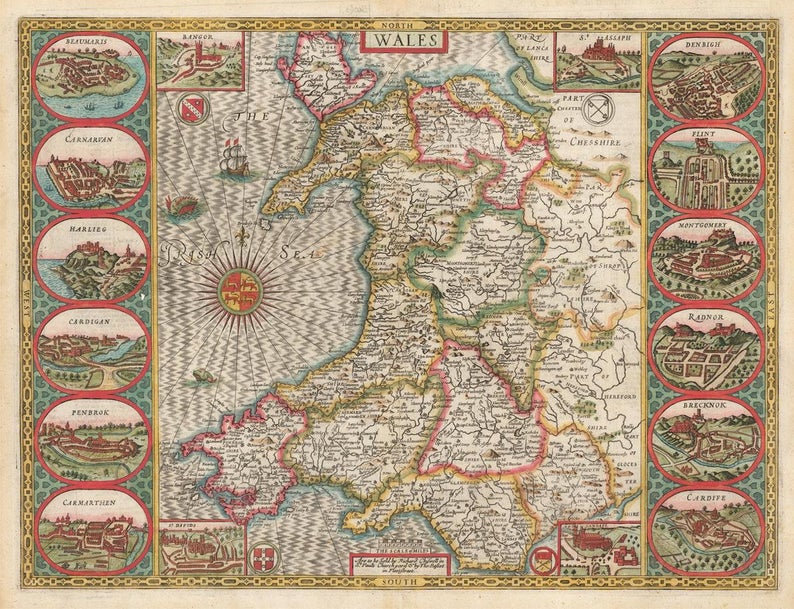
Tonypandy left its own stain and its own costs. Before that, Churchill’s contacts with Welsh politics were peaceable and episodic. Welsh Liberals were not disturbed by his membership in the imperialist Liberal League, which also applied to other leading Liberals, including Prime Minister H. H. Asquith and several Welsh MPs. Welsh affairs before 1914 largely concerned the battle for the disestablishment and disendowment of the Church of Wales, passed by the Liberal government in 1914 but then deferred until the end of the First World War.5 The Church was attacked as a privileged, upper-class institution in mainly nonconformist, chapel-going Wales and also as an anglicizing force that challenged the national identity. One bishop had foolishly declared, “There is no such place as Wales.” The Established religion was viewed as Eglwys Loegr (the Church of England in Wales)—English in speech and Tory in politics—creating an issue that was to the Welsh the equivalent of home rule in Ireland.
Disestablishment was finally passed in September 1914 but deferred until September 1919, by which time David Lloyd George was in 10 Downing Street. Churchill had little interest in these sectarian politics. In 1908 he did give his views on education in public, but focussing on the progressive, non-sectarian issue of raising the school-leaving age. Randolph Churchill, in his biography of his father, has correctly given the view that the elder Churchill “transcended the religious obsessions which usually vitiated the arguments of either side.”6 His father cheerfully declared that he supported the Anglican Church—like a flying buttress—from the outside. Somewhat surprisingly, his marriage to Clementine Hozier in 1908 was presided over by the Bishop of St. Asaph, a Conservative and a pugnacious defender of the Church of England in the debates over disestablishment.
More conventionally, Churchill as Home Secretary was prominent at Caernarfon Castle in 1911, when the heir to the throne, the future Edward VIII and Duke of Windsor, was invested as Prince of Wales, much as Prince Charles was used politically in 1969 by being made to spend a period in a student hostel in Aberystwyth learning to speak Welsh. This spectacular episode in 1911 is well described in detail, starting on page 23, by David Freeman. It was discussed in private talks by two serpentine figures politically opposed to each other, Lloyd George and the Bishop of St. Asaph, as a way of unifying a country divided into hostile camps over the People’s Budget, and in Wales more specifically over the issue of Church disestablishment.7 Interestingly the press, in referring to Churchill’s role, made no mention of the Tonypandy controversy a few months earlier. In general, Churchill in these pre-war years, followed the path of Liberal orthodoxy in his own robust fashion. He strongly backed the government in the matter of the “People’s Budget” in 1909 and headed the Budget League. Despite his aristocratic background and birth in Blenheim Palace, Churchill warmly backed the Parliament Act of 1911, which seriously reduced the constitutional powers of the House of Lords.
The Two War Leaders
The key to Churchill’s career now was his close friendship with Lloyd George, his most important ally.8 The two men worked closely in the pre-war years in promoting New Liberal policies of social reform. But there then followed Churchill’s loss of Cabinet office after the disastrous failure of the Dardanelles campaign in the spring and summer of 1915. For this, Churchill, as First Lord of the Admiralty, was strongly blamed and endured a period out of office and in the wilderness. After Lloyd George became prime minister, he remodelled his government in mid-1917 and strengthened it by promoting two important Liberal ex-ministers: Edwin Montagu and Winston Churchill. The latter now became Minister of Munitions with Lloyd George’s radical ally, Dr. Christopher Addison, as his under-secretary.9 This new post put Churchill’s skills in labour relations to the test once more. But the important thing was that Lloyd George had restored him to the highest rank. He had rescued his old friend and thereby changed the course of history.
Churchill and Lloyd George are the two most influential of modern British prime ministers, supremely authoritative in peace and in war. Their roles as wartime premiers are considered, starting on page 26, by the distinguished biographer John Campbell. Both were inspirational orators to their people, though having perhaps differing views as to precisely who those people were. As Campbell notes, Churchill was emotionally far more attuned to fighting a war, though it should be remembered that his Welsh colleague was far from ignorant of the details of war strategy after serving on the Committee of Imperial Defence in the pre-war years. Also, though once a “pro-Boer,” Lloyd George was no pacifist. He battled fiercely with Kitchener over creating a Welsh Division. He used his new supreme role to transform the institutions of state in building a war economy, new Departments, and a War Cabinet that Churchill well remembered in the Second World War. Then he had at least the earlier precedent of Lloyd George to follow.
The challenges of total war in 1914 were totally new. On the other hand, Lloyd George’s pre-war experiences at the Board of Trade and the Treasury made him by far the more attentive of the two in promoting social welfare and economic change at home. His domestic reforms—pioneering measures in housing, education, and votes for women above all—sharply contrast, as Campbell observes, with Churchill’s bypassing the Beveridge Report on social insurance and failure to introduce a national health service (Assumption B in Beveridge). Above all, Lloyd George was far more active in transforming the office of prime minister and its administrative apparatus. His creation of the Cabinet Secretariat under Sir Maurice Hankey and the premier’s fellow Welshman Thomas Jones greatly strengthened the central governmental machine and the influence of the premier over it. British politics have never been the same since. Lloyd George’s added creation of a “garden suburb” of a prime minister’s personal secretariat (meeting in the garden of No. 10) has not been repeated, though some of its aspects in 1917 anticipated the special advisers of all parties.
Where Lloyd George was at a disadvantage was in the political difficulties he faced. Churchill in the Second World War made it clear that the civilian power gave instructions to the military, whereas Lloyd George constantly found his generals playing politics. Douglas Haig and William Robertson in particular intrigued shamelessly with the parliamentary opposition and even with King George V, himself a man of the right. The wider political context was also far more disadvantageous for Lloyd George than for Churchill twenty-five years later. Lloyd George was not the leader of a governing party; Churchill had the wisdom to ensure that he became Conservative leader after Neville Chamberlain left the government in late 1940. Lloyd George’s coup, which brought him to power in 1916, meant that his own party was split fundamentally between his followers and those of Asquith, his deposed predecessor.
After the “coupon” general election of December 1918, which saw his Coalition returned with a huge majority, Lloyd George was the head of a minority body of Coalition Liberals (including Churchill, of course) dependent for support upon a freestanding Tory majority. But it did not prevent the Liberal prime minister from continuing with important domestic reforms. It may be said that Lloyd George also settled the Irish question, through the partitioning of Ireland and an agreement with Sinn Fein, achieving a settlement that lasted for more than a hundred years. On this, the Welsh Wizard succeeded where his English predecessors Pitt the Younger, Sir Robert Peel, and even William Gladstone had all failed.10 Lloyd George also began processes of self-government in India and Egypt. In addition, he managed to withdraw British forces from a potentially disastrous campaign in Russia against the new Bolshevik government, despite Churchill showing the same intransigence over the matter as he did over India after 1945. But the issue now was the dependence of the government on largely right-wing Conservatives. In October 1922 a backbench Tory rebellion overthrew Lloyd George. After losing his seat as the Liberal Member for Dundee in 1922, Churchill rejoined the Conservatives in 1924 and became Chancellor of the Exchequer. Lloyd George, by contrast, was out of office permanently—a marginal figure for the rest of his career.
Nye Bevan
Winston Churchill’s relations with Wales now changed substantially because the main opposition to him came from the Labour Party. During the First World War, a fresh generation of young left-wing Labour leaders emerged as a new Welsh political elite. Men like Jim Griffiths, Ness Edwards, and Morgan Phillips were to figure prominently in party and government. They dominated Welsh politics for generations. Pre-war claims that Churchill was a class warrior now found new bitterness. The most forceful spokesman was a young former miner, Aneurin “Nye” Bevan, first elected to parliament in 1929; his career is analysed, starting on page 31, by Nick Thomas-Symonds, author of an important biography of Bevan and now a front-bench member of Labour’s shadow cabinet.
Bevan first made his name with a series of highly effective assaults on Churchill’s leadership during the Second World War. He was anxious that Churchill should not claim undue credit after El Alamein, that a second front in Western Europe should be rapidly pursued, and that the Coalition, which Clement Attlee and other Labour leaders joined, should not become a vehicle for right-wing social policies. Bevan was also anxious that Labour should not be swept aside by the patriotic passions of wartime and to ensure that it could be returned to power when the war was over. He revived old Labour criticisms of Churchill, including his calamitous policies at the Treasury in returning Britain to the gold standard in 1925, which drastically increased the depression in the Welsh coal industry. As John Maynard Keynes observed, Churchill’s dear money policy rested on deliberately raising unemployment.11 There were also bitter memories of Churchill’s editing the anti-union British Gazette during the General Strike in 1926. And of course there was always Tonypandy.
As Minister of Health under Attlee, Bevan often came into conflict with Churchill in the Commons. To Churchill, Bevan was “a squalid nuisance,” a “Tito from Tonypandy.” Bevan alleged that the Tories “were lower than vermin.” Yet, as Thomas-Symonds’ article shows, there was always respect between the two, both political mavericks and charismatic personalities. When Bevan resigned from the government over Hugh Gaitskell’s 1951 budget, which imposed charges on parts of the National Health Service, it could be argued that Churchill was one of the first Bevanites. After Churchill returned to 10 Downing Street in October of that year, the rearmament programme that had led to the cuts in health were significantly scaled down, much to the relief of key civil servants like Ian Bancroft.12 Bevan seemed to have been right after all. His demands for a more independent British foreign and defence policy as shadow foreign secretary also found support from Churchill, while Michael Foot’s life of Bevan praises Churchill’s advocating international negotiations to do away with the atomic and hydrogen bombs. Despite their passionate opposition to one another, Winston and Nye could come together as democrats and fierce anti-communists. Churchill had become the war hero for the ages. Bevan was the architect of the National Health Service, a unique source of national pride—even of national identity—when the staff became heroes in 2020 during the COVID-19 pandemic and celebrated by the mass banging of saucepans in people’s doorways.
The Welsh Minister
In his final phase in politics, as Leader of the Opposition and in his second premiership in 1951–55, the inexhaustible Churchill built up a new relationship with the Welsh people. It was a far more amicable one, despite Tonypandy—where angry feelings were largely located in the mining valleys. He turned to writing A History of the English-Speaking Peoples, as discussed in a related article by Professor Paul O’Leary of Aberystwyth University on the International Churchill Society website.13 The four-volume work was Churchill’s contribution to what he called in 1946 “the Special Relationship” with the United States.
One local ambition would be Churchill’s attempt to conciliate the people of Wales, where the Conservatives had been crushed politically—first by the Liberals and then by the Labour Party—since Gladstone’s electoral triumph in 1868. Hence Churchill, in his late years, turned his mind to the government of Wales, discussed, starting on page 35, by Adam Evans, clerk to the House of Commons committee on Welsh Affairs. A moderate version of Welsh home rule had been on the political agenda since 1945, when the “Parliament for Wales” campaign became forceful under the leadership of none other than Lloyd George’s daughter Lady Megan, then the Liberal MP for Anglesey. The Conservatives were the first major party to give this issue serious attention.
The first leading Conservative to speak to the matter was R. A. Butler. At the 1948 Tory conference, he pledged that his party would appoint “an ambassador for Wales.” This was a vague and generalised pledge, but it did suggest that the specific national voice would be heard in Cabinet.14 When the Conservatives were again returned to office in 1951, Churchill was unable to find a Welsh figure to fill this pioneer position and so appointed the Scottish lawyer Sir David Maxwell Fyfe, irreverently christened in Wales “Dai Bananas.” It was clearly a minor appointment, since Maxwell Fyfe would hold this position while also serving as Home Secretary. Nor was there any suggestion that the government of Wales would in any way be administered by popularly elected representatives. There was certainly sympathy in the party, however, notably from a member of the Conservative Research Department, the then little-known Enoch Powell, a Welsh speaker.
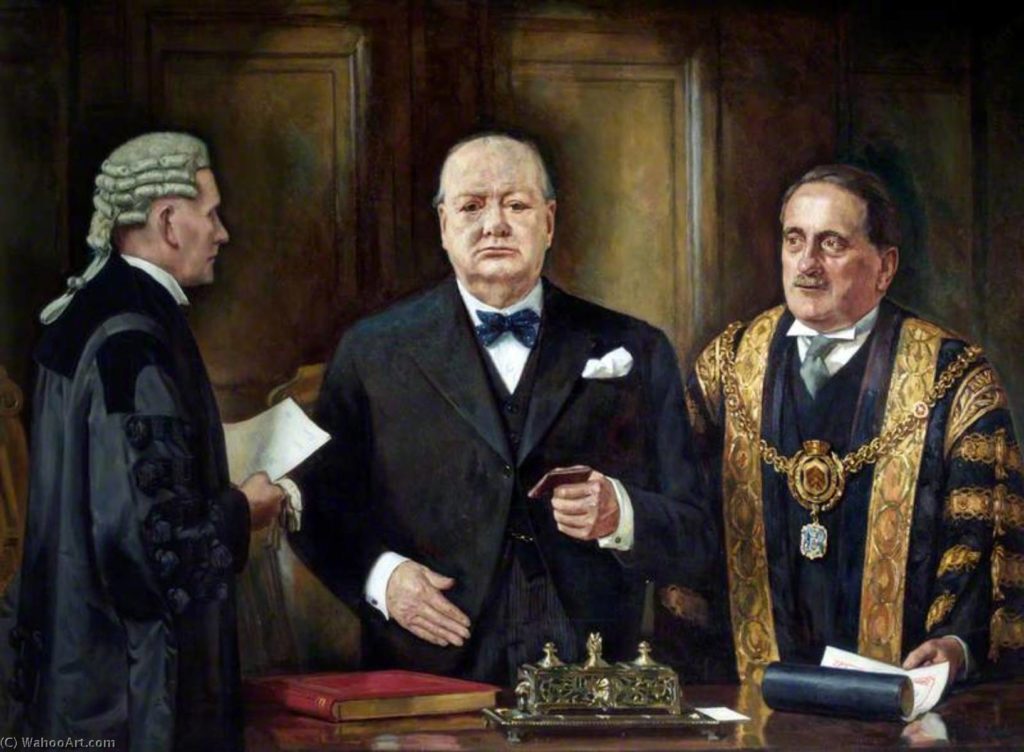
To give the new arrangement more plausibility in Wales, Churchill appointed one of the few Conservative MPs from Wales, Sir David Llewellyn, as Welsh Under-Secretary. Welsh matters were particularly relevant in education and agriculture, where administrative devolution had been in operation since 1907 and 1919. At the same time, it was made very clear that the new minister would have no executive role. In 1954 Maxwell Fyfe was succeeded by Gwilym Lloyd George, the younger son of the imperishably famous former prime minister, who had already held cabinet office. It was under his successor, the Englishman Henry Brooke, that the Welsh Office became unpopular amongst Welsh people when the rural village of Tryweryn in Merioneth was drowned to provide a large reservoir for the city of Liverpool, in England.15
How much did the new ministry reveal of genuine sympathy on Churchill’s part? He had once spoken in support of “home rule all round” at Caernarfon in 1904.16 Clearly it was not a political priority. At the same time, his action helped to pave the way for a secretaryship of state for Wales, a post created by Harold Wilson for Labour in 1964. The movement for Welsh devolution then gained momentum, and, in 1999 by a very narrow majority, the Welsh electors (along with the Scots, who were far more enthusiastic) embraced the devolution settlement and the creation of its own parliament, christened in 2021 Y Senedd.
A Sea of Song
Churchill himself was able to brush aside memories of Tonypandy and the General Strike and frequently demonstrated affection for “the little five-foot nation,” as Lloyd George called his people.17 This came out in the remarkable tribute to his old comrade, Lloyd George, after the latter’s death in March 1945. Churchill’s feelings for the Welsh (“that unconquerable race”), however, went far beyond his personal regard for Lloyd George. It is notable that his library contained one book written in Welsh (on the English invasions of Wales, admittedly!). It is pleasant that Churchill was to be one of the very rare politicians to use the Welsh language in the Commons. In response to an amiable question from the left-wing Labour MP Emrys Hughes (Keir Hardie’s son-in-law) in November 1951, he pronounced impeccably the surname of the Welsh junior minister “Llewellyn,” and added, in a phrase used during the Investiture in 1911, “mor o gan yw Gymru i gyd” (All Wales is a sea of song). As so often in Churchill’s career, beneath the political polemics, there lay an indelible level of warmth and humanity.
Endnotes
1. For this, see Dai Smith, “Leaders and Led,” in K. S. Hopkins (ed.), Rhondda—Past and Future (Rhondda Borough Council, 1975).
2. Randolph S. Churchill, Winston S. Churchill, vol. II, Young Statesman, 1901–14 (London: Heinemann, 1967), pp. 277–78.
3. See General Sir Nevil Macready, Annals of an Active Life, 2 vols. (London: Hutchinson, 1924).
4. An important work on these themes is by my late wife, Jane Morgan, Conflict and Order: The Police and Labour Disputes in England and Wales 1900–1939 (Oxford: Oxford University Press, 1987), especially pp. 44–49 and 154–56.
5. See Kenneth O. Morgan, Wales in British Politics 1868–1922 (Cardiff: University of Wales Press, 1963), chaps. 4–6.
6. Churchill, pp. 373 ff.
7. Archbishop A. G. Edwards, Memories (London: John Murray, 1927), pp. 242 ff.
8. For a fuller treatment, see Richard Toye, Lloyd George and Churchill: Rivals for Greatness (London: Macmillan, 2007).
9. For the career of Lord Addison, see Kenneth and Jane Morgan, Portrait of a Progressive (Oxford: Oxford University Press, 1980).
10. See Ronan Fanning, Fatal Path: British Government and the Irish Revolution 1910–1922 (London: Faber and Faber, 2012).
11. Peter Clarke, The Keynesian Revolution in the Making 1924–1936 (Oxford: Oxford University Press, 1989), p. 39. Keynes was writing to Sir Henry Leith Ross.
12. Interview with Sir Ian Bancroft, 19 February 1996.
13. See Paul O’Leary’s article on this in the Churchill Bulletin, August 2021, www.winstonchurchill.org/publications/churchill-bulletin/bulletin-158-aug-2021.
14. See Alan Butt Philip, The Welsh Question: Nationalism in Welsh Politics (Cardiff: University of Wales Press, 1975), pp. 276 ff.
15. Wyn Thomas, Hands off Wales (Llandyssul: Gomer Press, 2013).16. W. R. P. George, Lloyd George: Backbencher (Llandyssul: Gomer Press, 1983), pp. 392–94. Noticeably, Churchill omitted any reference to Scotland in this speech. Speech to London Welshmen, Queens Hall, London, 19 September 1914. The full text is in David Lloyd George, From Terror to Triumph (London: Hodder and Stoughton, 1915).
Subscribe
WANT MORE?
Get the Churchill Bulletin delivered to your inbox once a month.
